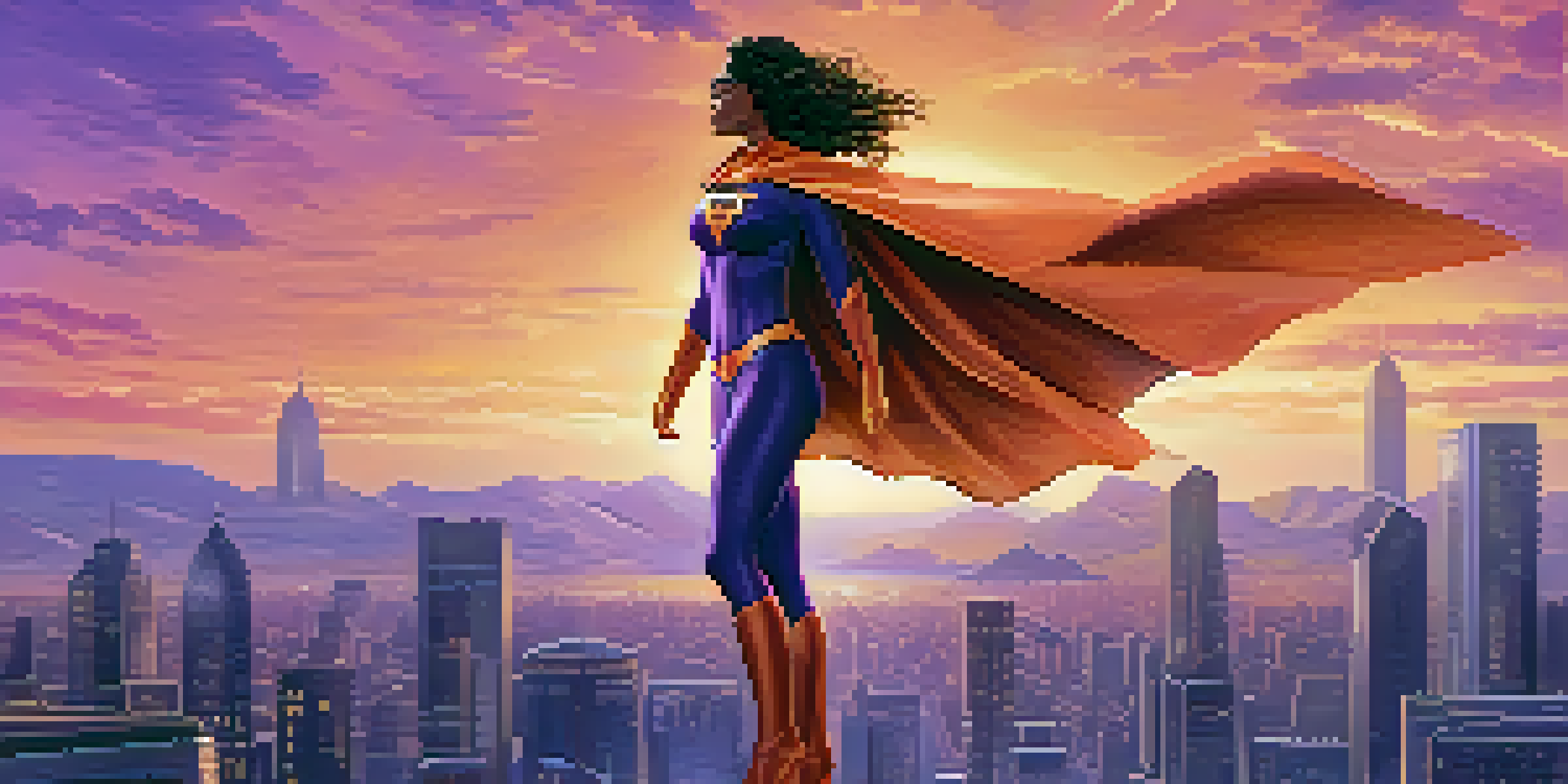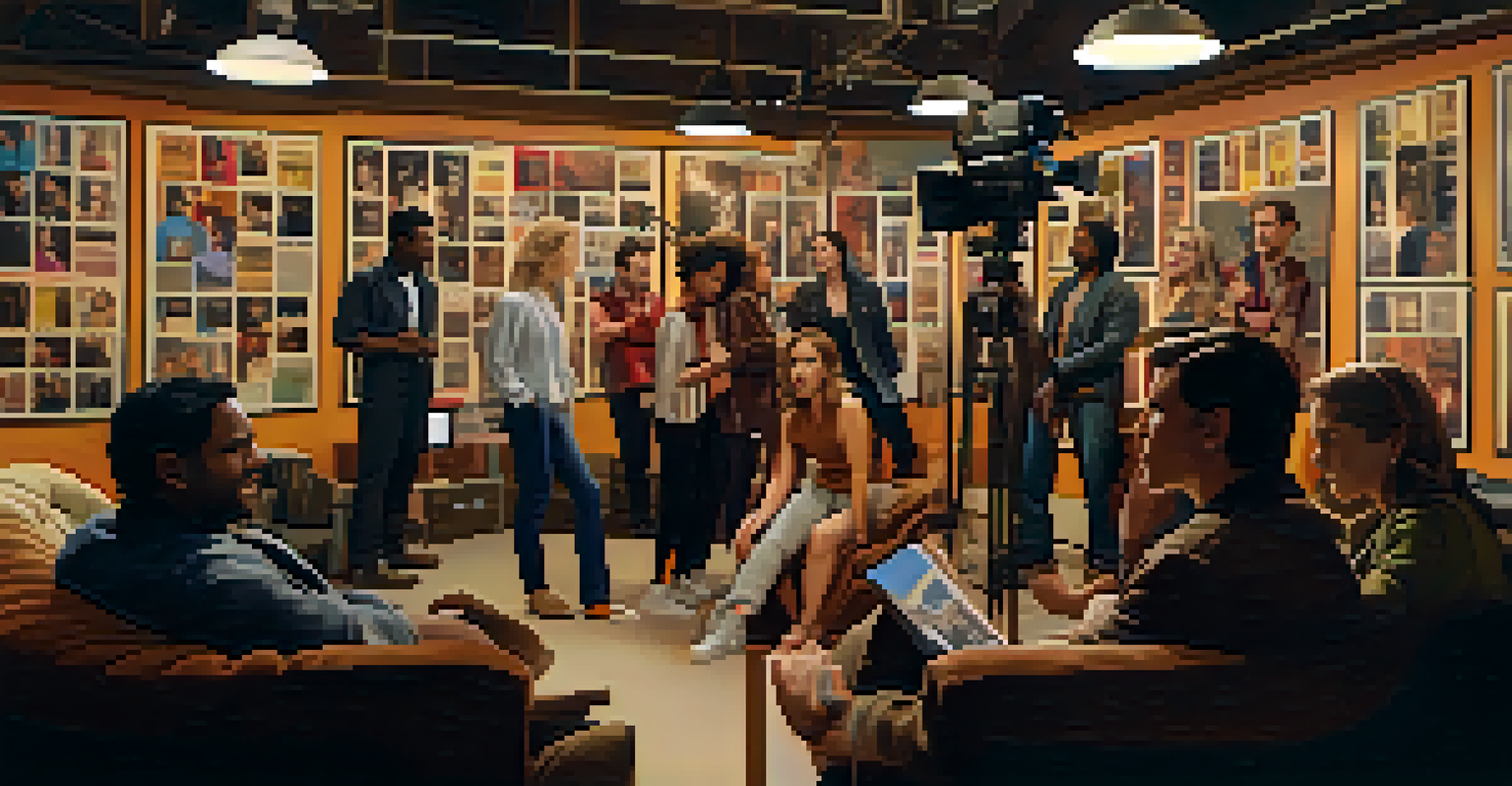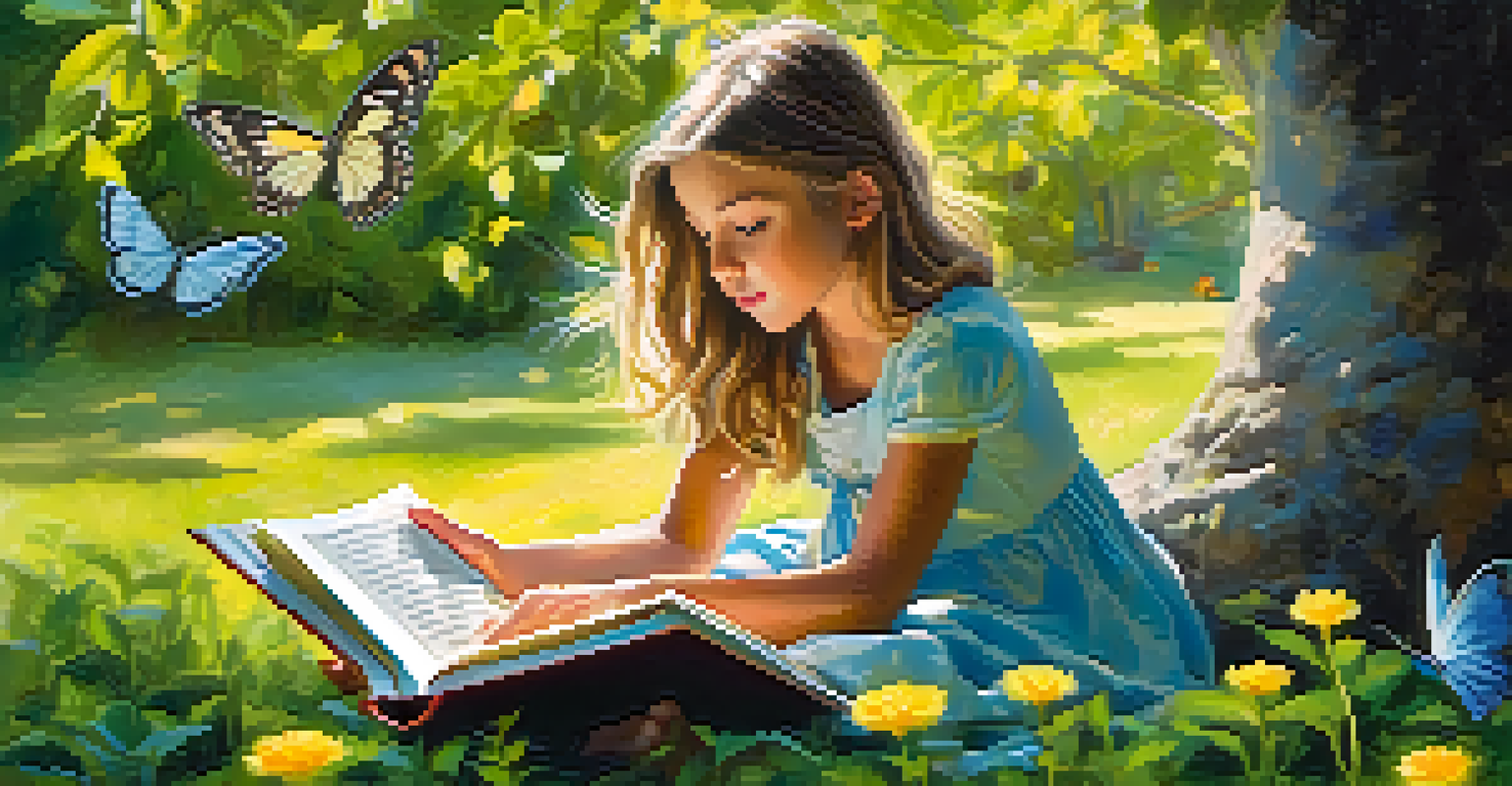The Evolution of Gender Roles in Modern Cinema: A Deep Dive

The Historical Context of Gender Roles in Film
To understand the evolution of gender roles in cinema, we must first look back at the historical context. In the early days of film, women were often relegated to stereotypical roles, such as the damsel in distress or the dutiful housewife. These portrayals reflected societal norms of the time, which valued traditional gender roles and limited women's agency.
Cinema is a mirror by which we often see ourselves.
As we moved into the mid-20th century, the rise of the feminist movement began to challenge these outdated stereotypes. Films started to feature more complex female characters who were not only strong but also multifaceted, showcasing their desires, ambitions, and flaws. This shift began to resonate with audiences looking for more relatable and empowering stories.
However, this evolution was not linear. The 1980s and 1990s saw a mix of progress and regression in gender representation. While some films celebrated female empowerment, others fell back into clichéd tropes that undermined the strides made by earlier feminist movements. Understanding this ebb and flow is crucial in grasping the current landscape of gender roles in film.
The Rise of Strong Female Characters
In recent years, we've witnessed a significant rise in strong female characters who defy traditional gender norms. Movies like 'Wonder Woman' and 'Mad Max: Fury Road' have not only showcased powerful women but also highlighted their leadership skills, intelligence, and independence. These characters serve as role models for audiences, particularly young girls, showing them that they can be heroes in their own stories.

Additionally, the portrayal of female characters has expanded beyond the conventional ‘tough girl’ archetype. We now see women in diverse roles that include scientists, leaders, and even anti-heroes. This diversity allows for a broader representation of women's experiences and challenges societal expectations.
Evolution of Female Roles in Film
The portrayal of women in cinema has transformed from stereotypes to complex characters, reflecting societal changes and empowering narratives.
This shift towards strong female characters is not just a trend; it's a reflection of changing societal values. Audiences are increasingly demanding narratives that showcase women as complex individuals, capable of both strength and vulnerability. This evolution enriches storytelling and invites viewers to empathize with characters on a deeper level.
The Impact of LGBTQ+ Representation in Cinema
The representation of LGBTQ+ characters in film has also played a crucial role in the evolution of gender roles. With films like 'Moonlight' and 'Call Me by Your Name,' we see not only the exploration of diverse sexualities but also the questioning of traditional gender norms. These narratives invite viewers to rethink their understanding of identity and love.
The best thing about being a feminist is that you get to be a human being.
As LGBTQ+ representation has increased, so has the complexity of characters portrayed. No longer confined to stereotypes, these characters are written as fully realized individuals with their own stories, struggles, and triumphs. This shift allows for a more inclusive definition of gender roles that embraces fluidity and diversity.
Furthermore, the success of films with LGBTQ+ themes has opened doors for more stories that challenge the binary understanding of gender. As audiences embrace these narratives, filmmakers are encouraged to explore a wider range of identities, contributing to the overall evolution of gender roles in cinema.
The Role of Men in Changing Gender Dynamics
While much of the focus has been on the evolution of female roles, it's essential to recognize the changing portrayal of men in modern cinema. Traditionally, male characters were often depicted as dominant, stoic, and emotionally detached. However, recent films are beginning to challenge these stereotypes, presenting men as vulnerable and emotionally expressive.
Movies like 'The Pursuit of Happyness' and 'A Star is Born' showcase male characters who grapple with their emotions, relationships, and societal expectations. This shift not only humanizes these characters but also encourages audiences to embrace a more nuanced view of masculinity. By presenting men as multi-dimensional, filmmakers contribute to a healthier dialogue around gender roles.
LGBTQ+ Representation Matters
Increased representation of LGBTQ+ characters in film has broadened the understanding of gender roles, promoting inclusivity and fluidity.
As men in film become more relatable and empathetic, it promotes a culture where gender roles are not strictly defined. This change not only benefits female representation but also helps create a more egalitarian perspective on gender as a whole.
The Influence of Streaming Services on Gender Representation
The rise of streaming services has significantly impacted how gender roles are represented in cinema. Platforms like Netflix and Hulu have become breeding grounds for innovative storytelling, offering diverse narratives that challenge traditional gender norms. This accessibility allows for a wider range of voices and stories that might not have found a place in mainstream cinema.
Moreover, streaming services often cater to niche audiences, allowing for more experimental and inclusive content. Shows like 'Sex Education' and 'Orange is the New Black' explore gender and sexuality with a refreshing honesty, broadening the conversation around identity and representation. This shift encourages creators to push boundaries and tell stories that reflect the complexities of modern life.
As a result, the influence of streaming services is shaping the future of gender roles in cinema. By providing platforms for underrepresented voices, these services are revolutionizing the landscape, making it more inclusive and reflective of society's evolving values.
The Role of Audience Reception in Gender Role Evolution
Audience reception plays a crucial role in the ongoing evolution of gender roles in film. Viewer preferences and feedback can significantly impact studios' decisions on which stories to tell and how to tell them. As audiences demand more authentic and diverse representations, filmmakers are increasingly taking note.
Social media has amplified this effect, allowing audiences to voice their opinions and hold filmmakers accountable. Movements like #MeToo and #TimesUp have sparked conversations around gender representation, pushing for more equitable practices within the industry. This pressure has led to a greater focus on authentic storytelling that resonates with viewers.
Audience Impact on Storytelling
Viewer feedback and social media movements are driving the demand for authentic and diverse narratives in film, shaping the industry's future.
Overall, audience reception is a powerful driving force behind the evolution of gender roles. By advocating for diverse and authentic narratives, viewers can influence the types of stories that reach the screen and help shape the future of cinema.
Looking Ahead: The Future of Gender Roles in Cinema
As we look ahead, the future of gender roles in cinema appears promising yet challenging. With ongoing discussions about representation and inclusivity, filmmakers have the opportunity to create stories that reflect the complexities of modern society. The demand for diverse narratives is greater than ever, and audiences are eager for films that break away from traditional molds.
However, it is essential to approach this evolution thoughtfully. As filmmakers push boundaries, they must also be mindful of the authenticity and depth of the characters they create. Tokenism can undermine the progress made, so it's crucial to ensure that diverse voices are represented both in front of and behind the camera.

Ultimately, the future of gender roles in cinema will depend on a collective effort to embrace change. By fostering an environment that values diversity and authenticity, we can look forward to a richer cinematic landscape that honors the complexity of human experience.